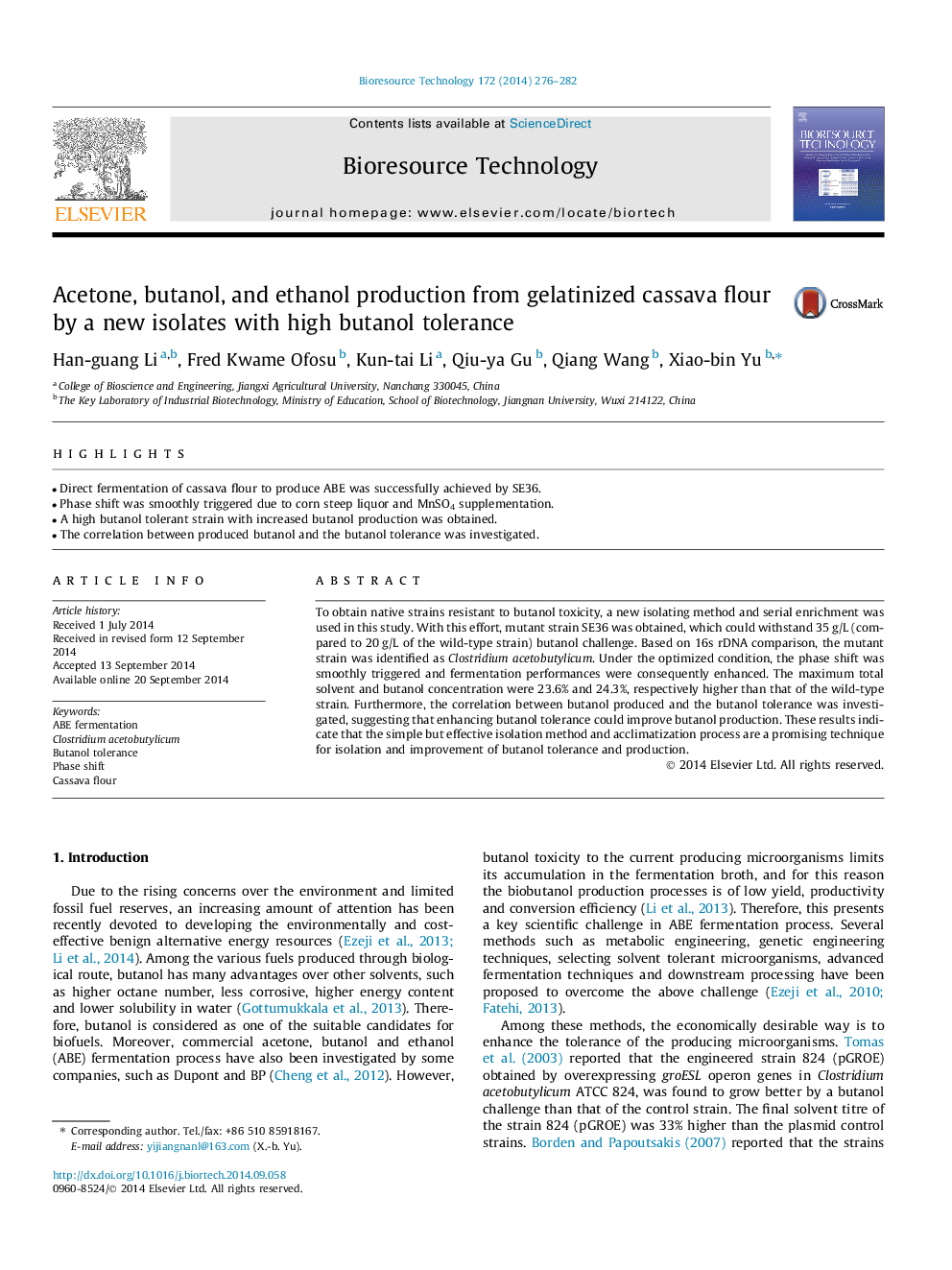| Article ID | Journal | Published Year | Pages | File Type |
|---|---|---|---|---|
| 680522 | Bioresource Technology | 2014 | 7 Pages |
•Direct fermentation of cassava flour to produce ABE was successfully achieved by SE36.•Phase shift was smoothly triggered due to corn steep liquor and MnSO4 supplementation.•A high butanol tolerant strain with increased butanol production was obtained.•The correlation between produced butanol and the butanol tolerance was investigated.
To obtain native strains resistant to butanol toxicity, a new isolating method and serial enrichment was used in this study. With this effort, mutant strain SE36 was obtained, which could withstand 35 g/L (compared to 20 g/L of the wild-type strain) butanol challenge. Based on 16s rDNA comparison, the mutant strain was identified as Clostridium acetobutylicum. Under the optimized condition, the phase shift was smoothly triggered and fermentation performances were consequently enhanced. The maximum total solvent and butanol concentration were 23.6% and 24.3%, respectively higher than that of the wild-type strain. Furthermore, the correlation between butanol produced and the butanol tolerance was investigated, suggesting that enhancing butanol tolerance could improve butanol production. These results indicate that the simple but effective isolation method and acclimatization process are a promising technique for isolation and improvement of butanol tolerance and production.
